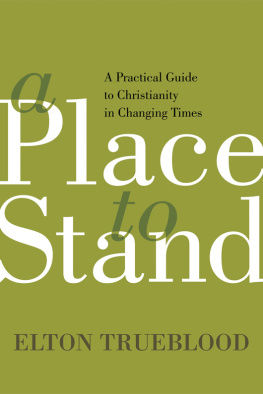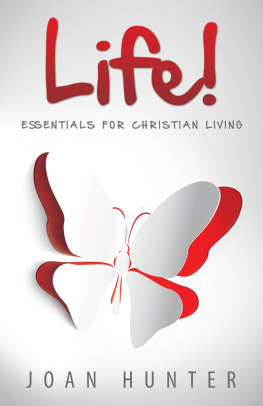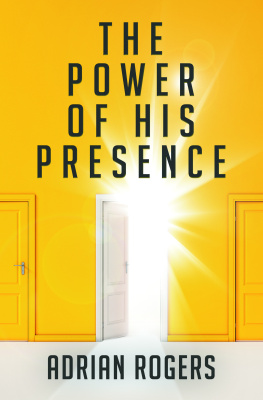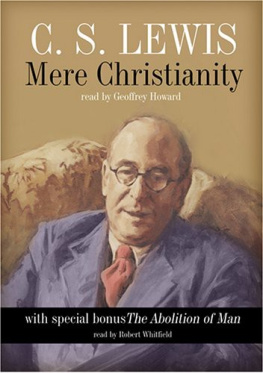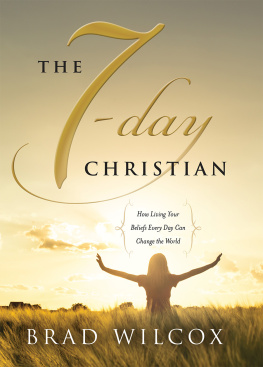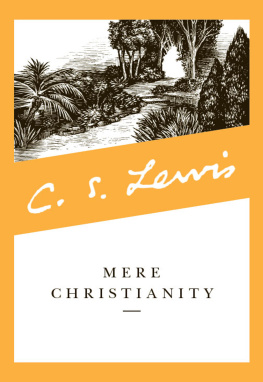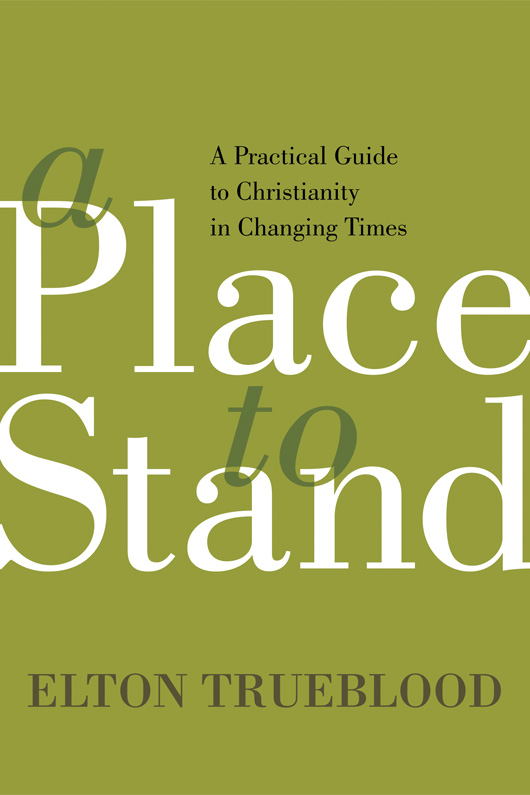CONTENTS
Because committed Christians are so obviously a minority today, it is important that they tell their neighbors what they believe and why. This book is my attempt to accept a portion of this responsibility. It represents the outcome of more than forty years of mental struggle. The book is, therefore, akin to autobiography, though it deals with ideas rather than with events. I have tried to express, forthrightly, the conclusions I have reached on the most important questions people can face, and I have tried also to explain the thinking processes which have led to these conclusions. My hope is that as a consequence, readers, and particularly younger ones, will find something solid amidst the perplexities and confusions of the modern world.
As the careful reader will soon observe, my search for an honest answer to the deepest questions that perplex us has led me to a concrete faith which, for lack of a better term, may be called Basic Christianity. Though this can, I am convinced, be expressed in highly contemporary ways, it is no discovery of the present age. I am well aware that the more up to date a book is, the sooner will it be dated. Though I am trying to speak to my own age, I hope that I am not overly impressed by it. If we discover anything which is really true, it will be equally true in succeeding centuries.
In the attempt to give the reader a frank explanation of the reasons that have led me to adopt a position that makes more sense than does any alternative known to me, I have tried to be clear. Part of the shame of the theology of the recent past is that sometimes it has been made deliberately foggy, under the fatuous assumption that what cannot be understood is somehow more profound. Because the chief secret of clarity is that of logical order, the sequence of topics is of the first importance. Therefore, the order of chapters in this book is meant to reflect the order of thought.
Though by faith I am a Christian, by profession I am a philosopher, and I have tried to remember the latter while writing of the former. Always, as I write, I try to keep in mind the arduous standard which my teacher, Professor Arthur O. Lovejoy, demonstrated and expected. After his death, one of his former students said, With his eyes upon you, you would weigh your words twice before uttering them. His presence discouraged laxity of thought, intellectual bravado, and facile talking. Because the issues are of such magnitude the philosopher, when sharing ones thoughts on the Christian faith, must set for oneself standards which are not less, but are even more rigorous, than those expected in other areas of intellectual inquiry.
Ever since I first encountered the mind of Blaise Pascal, I have been intrigued by his ambitious purpose. Day after day he gathered notes for a book he hoped to write, in which he would try to tell the ordinary thoughtful seeker why he had found a center of stability in the midst of his perplexity. My book, of course, is far different from the one Pascal would have written had he lived to complete his self-appointed task, but the purpose is the same. My hope is that the book will be of assistance to the ordinary seeker who is trying to be intellectually honest.
D. E. T.
Earlham College Labor Day, 1968
Known as the Dean of American Religious Writing, D. Elton Trueblood did for American audiences something similar to what C. S. Lewis achieved in Britain. He helped believers embrace their faith and to give an account for the hope that is within them (I Peter 3:15). Author of thirty-one books, followed by a half-dozen collections of his essays, Trueblood also encouraged generations of other emerging writers so that his influence was multiplied many times over. Addressing such issues as the vitalization of the church and the equipping of the laity for ministry, he did more to inspire thinking evangelicalism than any other author in his day. And, Truebloods most important book within that contribution is A Place to Stand.
In the central entryway at Dayton International Airport there used to be a large globe, placed there by the National Cash Register Company (NCR) as an advertisement for its headquarters in Dayton, Ohio. This rotating model of Planet Earth provided the perfect spot to meet incoming travelers. Meet you at the globe, worked perfectly for an airport rendezvous of any kind. For several years no one thought anything was wrong, that is, until Elton noticed that the world was rotating from right to leftmaking the sun rise in the west and set in the eastinstead of left to right. The next day, Elton called the President of NCR and informed him that the world was turning in the wrong direction. Immediately, the companys engineers restored the right direction of the planets movement, and the sculpture not only continued to serve its purpose, but it did so truthfully.
In A Place to Stand, Trueblood also signals modern readers that the world is turning in the wrong direction in its understandings of God, humanity, and the meaning of life. In the light of truth, things need to change. As did C. S. Lewis a quarter century earlier, Trueblood confronts modern tendencies to sidestep the question of God and even more pointedly challenges trends seeking to diminish the place of God in peoples lives. Shifting the question from whether Jesus was like God to whether God is like Jesus becomes not only a valid argument for Gods existence, but even more pointedly it elucidates the character of God. Because Jesus was loving, kind, and wise, we know that God is. Where some might imagine God to be vindictive, cruel, and uncaring, Jesus reveals the opposite. As Archimedes said in days of old, Give me a place to stand, and I can move the entire earth. For the modern believer, Jesus Christ becomes a solid point of certitude, turning the world back to Gods love and presence; this book explains how that is so.
With so many others whom Elton Trueblood encouraged in their development, I owe him a great deal! He encouraged me to come and study with him at Earlham, and one of the gifts he gave me (as I also was also pastoring a small church in the areaWest River Friends Meeting) was to reflect together on how the previous sermon had gone... and how the next one might go. He provided me a key to Teague Library, his study, for my two years at the Earlham School of Religion, of which I made great use in my studies. More importantly, we had many conversations together about faith, ministry, and our callings to impact the world through the spoken and written word. For Eltons inspiring counsel and encouragement I am forever grateful.
I am also grateful to Jim Newby and Samuel Trueblood for their encouragement to get some of Eltons most important books back into print, and I am delighted that Mickey Maudlin and the publishers at Harpers have chosen to make some of their best works of the past available for new audiences. In providing a modest editing of the text, Ive sought to make the language more inclusive, but the references to contemporary literature remain as they were. With the publication of this book in 1969, it is no coincidence that the Death of God movement of the 1960s began to wane in the 1970s. Given the rise of the Science and Religion discussions and New Atheism debates in recent years, Elton Truebloods most theological of his thirty-seven books is sure to make a difference in a continuing way; he even expressed his belief in his autobiography (p. 81) that A Place to Stand would be the most enduring of all his books.
In turbulent times, where latest trends and newest waves often rehash older positions, thoughtful persons neednow as much as ever

